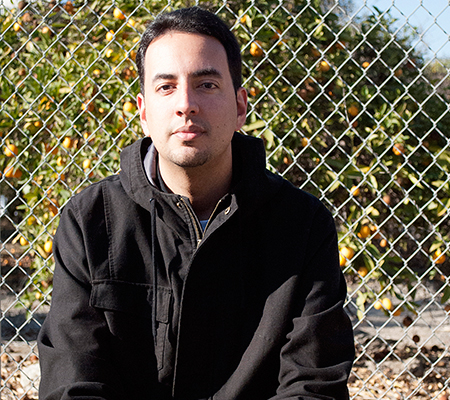By Gabriel San Roman
Inti-Illimani’s last studio album aptly titled La Máquina del Tiempo timed its release in 2012 with the 45th anniversary of the iconic Chilean band. Taking a trip in my own time machine, I recall seeing them as they toured North America in celebration of their then-40th anniversary. The July 2007 concert was quite an experience. Here’s a previously unpublished review:
“We are here celebrating our 40th anniversary,” Jorge Coulón
of Inti-Illimani told the crowd at the John Anson Ford Amphitheatre
last night, “but with a touch of sadness, because some of our friends
are no longer with us who were there since the beginning. We imagine
that maybe they are here tonight, smiling from the stars or from the
trees like our friend Victor Jara.”
And with that,
Inti-Illimani began playing “El Arado,” the great melodic campesino
song of the slain Chilean singer-poet. Behind the band was a projector
screen that showed slideshow images of the legendary Victor Jara with
couplets of his most revolutionary song lyrics. That’s all that needed
to happen last night to make it memorable.
But of course there was more….
The
John Anson Ford Amphitheatre is literally carved into the hills of
Hollywood.With the back drop of palm trees and hillside shrubery, Inti
Illimani played two sets with an intermission in between. Not only was
this particular concert special because it was in celebration of the
band’s 40th anniversary, it also featured talented symphonic musicians.
Violins, upright bass and piano accompanied the group as they sang a
bolero of the Chilean port city Valparaiso, “Porteña.” The first set ended with another song blending traditional Andean instruments with symphonic stringed instruments, “Tu Pequeño Mundo,” which is the musical soundtrack of a film entitled “Pequeño Mundo.”
When I spoke to Jorge Coulón
a week-and-a-half ago, we talked about finding a balance between the
band’s historic legacy and its new material. Jorge always says he
doesn’t want Inti-Illimani to become a museum of itself. This difficult
dynamic is always at play and last night was no different. As they
returned from their intermission back to the stage, the crowd demanded
the classics. “La Partida!,” screamed one person. “La Exiliada,”
another petitioned. “Samba Lando!” yet another pleaded. Jorge told the
crowd that there were over 450 songs in their catalogue and the band
couldn’t play all of them! He said that the program for the evening was
set, and if the song you wanted them to play was on it, then,
“congratulations, you are a lucky winner!” Jorge then went on to note
that nostalgia is a bad thing, and that memory is a good thing.
Nostalgia traps us in the past, while memory serves as a foundation from
which to construct the future.
From those lessons, Jorge set
up the next song which proved to be one of the most powerful
experiences of the night. He said that the band’s instruments carry
with them a lot of phantoms and ghosts. Jorge then went on to speak
about Marta Ugarte. Marta Ugarte was a communist professor who went
into hiding following the 1973 coup in Chile. The military found her,
kidnapped, tortured and mutilated her as they threw her body in to
Pacific Ocean off the coast of Valparaiso. The ocean washed Ugarte
ashore and saved her from becoming disappeared. The poetry of Patricio
Manns told the story of Marta Ugarte through the song, “Vino del Mar.”
Inti-Illimani and the symphonic musicians captured the sublime
melancholy of this history and the last note hushed the crowd into
profound reflection; myself included. “Vino del Mar” is political art
at its most human and moving.
Inti-Illimani, by being musical and
lyrical virtuosos, can give you a full spectrum experience of what it
means to be truly alive in every sense of the word. With them, the
sadness of “Vino del Mar,” can be followed up by the super cumbia,
“Sobre Tu Playa.” When this cumbia started playing, damn near everyone
in the amphitheatre got up and danced. You can not resist the rhythms of
the Americas! After the super cumbia finished, the group took a bow
and we in the crowd began to instantly chant “otra! otra!” Another
screamed, “Una hora mas!” More ambitiously, I thought in my mind, “40
more years!”
Inti-Illimani did indeed come back out and ended
the night with two crowd pleasers, “Samba Lando,” and “La Fiesta de San
Benito.”
As a last reflection: I, a Mexican not accostomed to
being outnumbered by other Latin Americans around these parts, was
surrounded by South Americans young and old. My mind began to wonder
and imagine the lives of the older people and what they might have been
through. Were there torture survivors in the crowd? What trials and
tribulations did the South American couple, cleary in their sixties and
clearly still in love, sitting next to me endure? What did that
shoulder rub from his wife communicate to him as Inti-Illimani played a
song by Violeta Parra? What was it an affirmation of? How many people
in the crowd had lost loved ones, or were forced into exile to live in
strange lands not their own because of military coups in the southern
cone of the Americas? And of those, how many refused to let their
spirits be destroyed and danced with happiness at least for that one
night during “Sobre Tu Playa?”
I will never know what it was
like to be in a crowd of one million people in Santiago de Chile during
the height of the Allende campaign for president as Inti-Illimani
played for the masses…But I am here now, in 2007, experiencing the
history and the present while knowing that Inti-Illimani still matters
to people in profound ways beyond my comprehension. Their experiences
were relegated solely to the realm of my imagination as my eyes surveyed
the crowd behind me…


